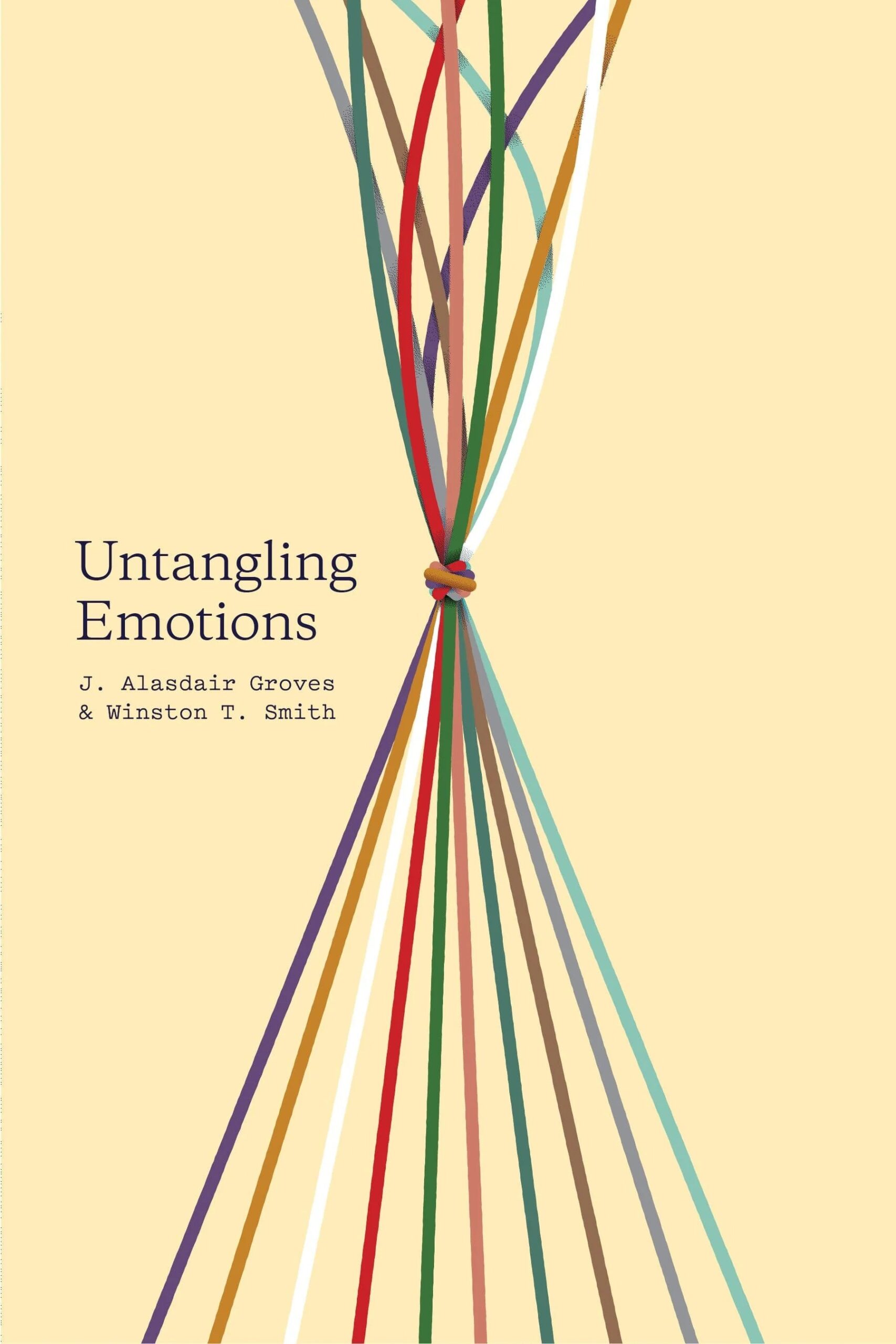There’s two types of people in this world: those inclined toward their feelings and those who are not. I feel like I’m in the first category.
At times I’m left frozen by my feelings, unsure how to act as I feel like doing nothing and everything all at once. When I’m stressed or anxious, the lines between feeling and reality blur. Sometimes the confusion is almost comical: Surely that assignment’s not really due tomorrow? At other times the blur can be so real I’m left spinning: I’m not sure if God exists… is Jesus really Lord?
Sometimes it’s not us—we see our friends wrestling instead. What are we supposed to do?
A Swirling Bucket
In late primary school, I convinced my parents to let me have a feature wall when they were repainting my room. I still have the paint sample stashed somewhere—“jolt of jade”. In Untangling Emotions, Christian Counselling & Education Foundation (CCEF) counsellors J. Alisdair Groves and Winston T. Smith pick up a paint bucket early on as a helpful picture for our emotions:
The computer obligingly tells several tint canisters to pour specific amounts of dense colour into your paint bucket. When the computer hits the precise amount of each colourant, it shuts off, and, voilà, you have your gallon of custom paint.
Your emotional state at any moment is like that paint bucket with streams pouring into it from your heart. (47)
Unlike the two litres required for bedroom feature walls, our emotional paint bucket never stops filling up. We are constantly bombarded with new situations and old memories which prompt any number of emotional responses (47).

Untangling Emotions
J. Alasdair Groves; Winston T. Smith
Untangling Emotions
J. Alasdair Groves; Winston T. Smith
Our emotions are complex. Some of us seem able to ignore our feelings, while others feel controlled by them. But most of us would admit that we don’t always know what to do with how we feel.
The Bible teaches us that our emotions are an indispensable part of what makes us human—and play a crucial role in our relationships with God and others. Exploring how God designed emotions for our good, this book shows us how to properly engage with our emotions so we can better understand what they reveal about our hearts and handle them wisely in everyday moments.
We feel sombre while having a serious conversation, but then laugh as our friend knocks his elbow (again) on the doorframe. We notice smells from the kitchen and are nostalgically transported back to the family dinner table. Then our friend continues sharing his suffering and our eyes start filling with tears. And those are only the emotions we’ve noticed and named!
Groves and Smith draw out several helpful observations. First, we don’t need to hide our buckets: in his kindness God has designed us with emotions. Second, it is right for the colour of our buckets to be constantly changing—“mixed emotions are the right response to a mixed world” (45). Third, given the speed at which emotional streams pump into our buckets, it’s an impossible task to understand all of our emotions and where they come from. We’re not a paint shop staff member who has to be able to describe each hue in isolation and the effect of their combination:
all we need to do is bring whatever we do manage to understand to God and entrust him with all the hidden corners of our hearts, loves and feelings that we can’t see into but he knows perfectly. (50)[1]
It’s an impossible task to understand all of our emotions and where they come from.
The Goal Behind Our Buckets
Our emotions are more than just random phenomena: they tell us what we love (32). Within thirty seconds, the child smiles as the lollipop entered their mouth; cries as it falls to the carpet; and shrieks as they blame their sibling. Why? Their unchanging love for the lollipop (33).
We love the smiles lollipops evoke, but we’d rather stop the crying or shrieking. We value the happiness the hug of a loved one brings, but perhaps we’d rather avoid the weeping or anger that comes when that same person dies—even though all three emotions probably reveal our love for them. Groves and Smith explain:
God gave us emotions that are actually designed not to change unless what we love changes or what is happening to the thing we love changes. (77)
We may tend toward preferencing certain emotions and disliking others, but it’s worth stopping to consider our end goal. If emotions reveal what we love, is our aim to feel perpetually positive? Groves and Smith answer with an emphatic no: “our biggest need is for new hearts with new loves and reoriented worship, not for more comfortable feelings” (80). Our greatest need is not for our emotions to change in any given moment, but for the heart behind our emotions to increasingly reflect God’s heart. Sometimes that will mean shrieking in the face of death.
Our biggest need is for new hearts with new loves and reoriented worship, not for more comfortable feelings.
So we do not surrender to our emotions as though they determine our every move. Nor do we suppress emotions we’d rather avoid or fixate on emotions we prefer. We don’t just “suck it up”. Instead, we draw near to God with our buckets in hand, asking him to transform our hearts from one degree of glory to another (chapter 7).
Engaging Our Buckets
Groves and Smith outline a four-step process for drawing near to God with our emotions (chapter 8). First, identify—what am I feeling? Second, examine—why am I feeling this way? What am I valuing that is causing this response? Third, evaluate—are these feelings “good and godly … [or] destructive or selfish” (97)? Finally, act—how can I love God and others well in this moment? Groves and Smith then devote the book’s final section to unpacking this process in relation to the hardest emotions—fear, anger, grief, guilt, and shame.
The process itself can become tedious: each step doesn’t need to be worked through in isolation, and it’s not necessarily this linear. We also don’t have to hyper-spiritualise and intensely engage with every emotion we identify. But I’ve still found the process incredibly helpful.
Last week I noticed I was becoming increasingly frustrated as the traffic around me slowed to a standstill, so I tried putting it into action. My frustration was stemming from already running late—now the stupid traffic meant I wouldn’t be able to maintain an image of being diligent, organised and in control. But my anger revealed that I prized my image over honouring drivers on the road: it was selfish. After that, my frustration didn’t immediately dissipate (nor do Groves and Smith suggest it will). But I was able to confess my self-idolatry to God, take a breath, and ask for his strength to avoid driving recklessly. Later I turned on cruise control to resist driving faster to my destination.
Rethinking Paint Labels
Throughout Untangling Emotions, Groves and Smith continually emphasise the existence of “negative emotions”. In fact, their first chapter is called “Sometimes It’s Good to Feel Bad”. In it, they point to God’s anger, grief and jealousy to show how these “negative emotions” are the right response to something wrong in the world (26–27).
But I wonder whether their choice to call these emotions negative works against their argument. Sure, it’s difficult to talk about these things without ascribing labels. But when we describe some emotions as “negative” it can connote a sense of right and wrong. It can imply “positive emotions” should be celebrated, while “negative emotions” are always something to suppress and hide and be ashamed about. Groves and Smith’s overall argument is sound as they encourage us to bring our entire emotional buckets to God—so this really is a minor quibble. But I do wonder whether relabelling these emotions from “negative” to “unpleasant”, “uncomfortable” or “hard” might have been better.
Don’t Discard the Bucket
Recently I caught up with a friend for coffee and shared some of my reflections from Untangling Emotions. As we spoke, he kept mentioning my emotions were a gift from God and that God had made me more attuned to my feelings so I could bless others, perhaps even in ways someone else couldn’t. I was confused why he kept reinforcing the point. Yet as I pondered the conversation in the following week, I realised his comments were a helpful corrective.
Having begun to engage some of my feelings with truth, reality and logic, I was starting to wield an indiscriminate sword, treating my feelings as worthless and untrustworthy. Be logical. Throw feelings aside. Focus on truth. Ironically, this was an emotional response: Groves and Smith don’t encourage us to empty and store our paint buckets. Nor is such an attitude reflective of Christ, in whose fully human footsteps we follow.
Jesus became frustrated, indignant, angry (Mk 9:19; 10:14; 11:15–17). He wept (Jn 11:35); was grieved by sin (Mk 3:5); and experienced great distress and agony (Mk 14:33–34). He marvelled (Mk 6:6); had compassion (Mk 6:24); sighed deeply (Mk 8:12); and felt forsaken by God (Mk 15:35).
Even in our fallen state, our feelings are good gifts from our heavenly Father, designed for our good. Feelings aren’t wrong in themselves. The goal shouldn’t be to dismiss them, but to seek to handle them wisely. We certainly won’t be like Jesus, perfectly honouring God in our emotions and the hearts behind them. But we make it our aim to please him.
[1] This should not be taken to mean there are never times where we should seek to understand hidden feelings.















